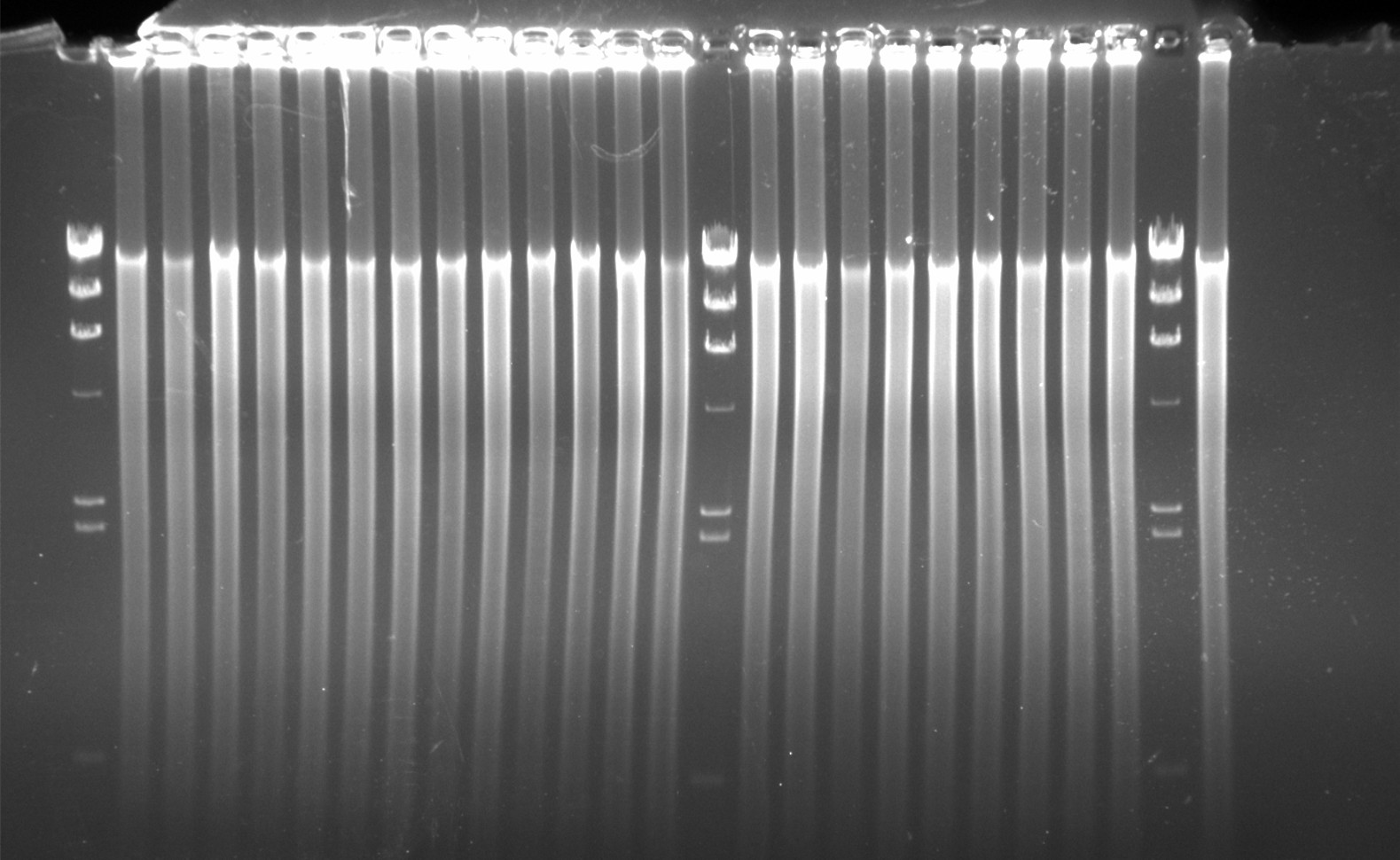
Newsroom
Researchers Reveal Genomic of Male-specific Microchromosomes in Gynogenetic Gibel Carp

Electrophoresis of the amplified products from microdissected microchromosome (Credit: IHB)
In a study published in PLoS Genetics, a research group led by Prof. GUI Jianfang from the Institute of Hydrobiology (IHB) of the Chinese Academy of Sciences revealed the genomic of male-specific microchromosomes in a gynogenetic fish.
Unisexual reproduction lacks the meiotic recombination, leading to the accumulation of deleterious mutations and hindering the creation of genetic diversity. Unisexual taxa are thus generally considered as an evolutionary end and short-lived. However, the gynogenetic gibel carp (Carassius gibelio) has outlived its predicted extinction time and exhibits high genetic diversity and strong ecological adaptation. Unlike other unisexual vertebrates, rare but significant male incidences were observed in wild population gynogenetic gibel carp. Therefore, gynogenetic gibel carp provides a unique system to explore the rationales underlying male occurrence in unisexual lineage and evolution of unisexual reproduction.
Previous studies have revealed the gynogenetic gibel carp has both genotypic sex determination (GSD) and temperature-dependent sex determination (TSD). Extra mcirochromosomes are associated with GSD and rearing temperature of the larval before gonadal differentiated is related to TSD. However, the contents of extra microchromosomes and their driving mechanism on male occurrence remain largely unknown.
Based on these previous findings, Prof. Gui’s team firstly identified a massively expand satellite DNA cluster on microchromosomes of hexaploidy gibel carp via comparing with the ancestral tetraploid crucian carp. They found the satellite cluster specifically localized on the microchromosomes.
The researchers then carried out fluorescence in situ hybridization (FISH) analysis using peptide nucleic acid (PNA) probes that designed based on the satellite sequence and developed a single chromosomal fluorescence microdissection technique. By doing this, they completely microdissected all nine microchromosomes in one female metaphase and all thirteen microchromosomes in one male metaphase, and separately amplified these isolated chromosomal samples via multiple displacement amplification.
Next, with the application of Polymerase Chain Reaction (PCR) detection based on the male-specific marker, the researchers identified three male-specific microchromosomes which was later sequenced by PacBio and the genomic anatomy. Results showed that these microchromosomes contained homologous sequences of autosomes and abundant repetitive elements.
Furthermore, combining analysis of the transcriptome and genome identified several potential male-specific genes with transcriptional activity during the developmental period of sex determination, among which four and five genes displayed male-specific and male-biased expression in gonads respectively.
These findings indicate that male-specific microchromosomes with massive satellite DNA and sex-specific/sex-biased genes resemble common features of sex chromosomes, which may be the main driving force for male occurrence in gynogenetic gibel carp. This study thus provides new insights into the evolution of unisexual reproduction.